Puberty means change; but puberty itself is changing, starting earlier for kids of all sexes and raising new issues as our understanding of sex and gender evolves and as our modern world of social media brings new challenges. Licensed clinical psychologist and mother of three Dr. Sheryl Ziegler here gives us a science-backed, experience-informed, and LGBTQ-inclusive guide for parents and other adults guiding children through these years. “This book is your guide to prepare your child for mentally and physically healthier teen years,” she writes.
The book encompasses more than just puberty, but rather starts at age 6, about the time when children leave kindergarten and begin formal education, spending most of their day away from home and meeting new people. Parents, for their part, may start to emphasize academics and extracurriculars, “but may not always have a strong grasp on how to guide a child socially and emotionally.” Yet our society often forgets the importance of these years, lost “between the challenges of early childhood and the turbulence of adolescence.”
The years from 6 to 12 are crucial, however, Ziegler argues, because parents can help children “build the support structure they need to thrive,” even into adolescence. Despite the growing independence of this age, “You are still the move important model for the choices they make, and the values they hold,” she writes, and “children will still listen to you, they expect to be guided by you, and they still like being around you”—advantages that may slip away with the greater independence of the teen years.
Ziegler covers topics including healthy relationships with peers and parents, regulating emotions and building emotional intelligence, body image and relationship with food, dealing with social pressure and bullying (and how to prevent your child from being a bully), substance abuse, digital habits, and yes, gender and sexual identity development. She not only explores what may be causing certain responses and behaviors in children as they navigate these areas, but also offers practical tips and tools to help parents best respond and support their children and set them on a healthy path for the future.
The book is supportive of parents and children of all genders. There is an entire chapter dedicated to gender and sexual identity development, which acknowledges the spectrum of sexuality, including not just heterosexual, gay, and lesbian, but also bisexual, demisexual, and asexual. It also astutely notes that sexual orientation isn’t always set in stone. The chapter includes a section on the “Mental Health of LGBTQ+ Children,” noting that their higher incidence of mental health challenges is because of stigma, not anything innate, and telling parents that the key thing for them to know is that “the most important protective factor for LGBTQ+ kids is having unconditional love and support at home.” (She doesn’t provide a citation, but I know that much of the work behind this assertion comes from Dr. Caitlin Ryan’s Family Acceptance Project.)
A section on gender identity is not just about trans and gender-nonconforming kids, but about the various ways that any child may express their gender, and the social constructs that can be harmful to all. Critically, in talking about gender identity exploration in childhood, as a child comes to understand and define whether they identify with the sex they were assigned at birth, Ziegler says (her bold): “I want to make clear that this is not some woke, modern model of child development. This is the way it has always been—it’s a part of puberty.”
Importantly, too, this chapter includes a section on “Teaching Your Child to be an Ally.”
Ziegler notes at the beginning of the book that the book is for everyone from “traditional families to nontraditional families and from binary to nonbinary genders,” but “I will refer to ‘boys’ and ‘girls,’ because that is what most of the research, as well as my experience, is based upon.” That usage certainly makes sense when she’s citing research and specific experiences, though I do think there are some places where she could have used more gender-inclusive language without misrepresenting the research or her experience. Ziegler’s recommendations for puberty books for kids are also specific to girls and boys; there are several titles that are inclusive of nonbinary children, however, that I wish she had included, such as You-ology and Sex Is a Funny Word.
Nevertheless, Ziegler is conscious in her usage and strongly supportive of LGBTQ youth, and that’s a good thing. The book is in any case far better in discussing LGBTQ topics than another recent book for parents about puberty, This Is So Awkward: Modern Puberty Explained, which, as I explained in my review of that title, includes a number of misleading and dangerous errors, particularly around trans youth. Overall, The Crucial Years is a recommended title for any parent or other adult whose kids are approaching or in that important phase of life.








